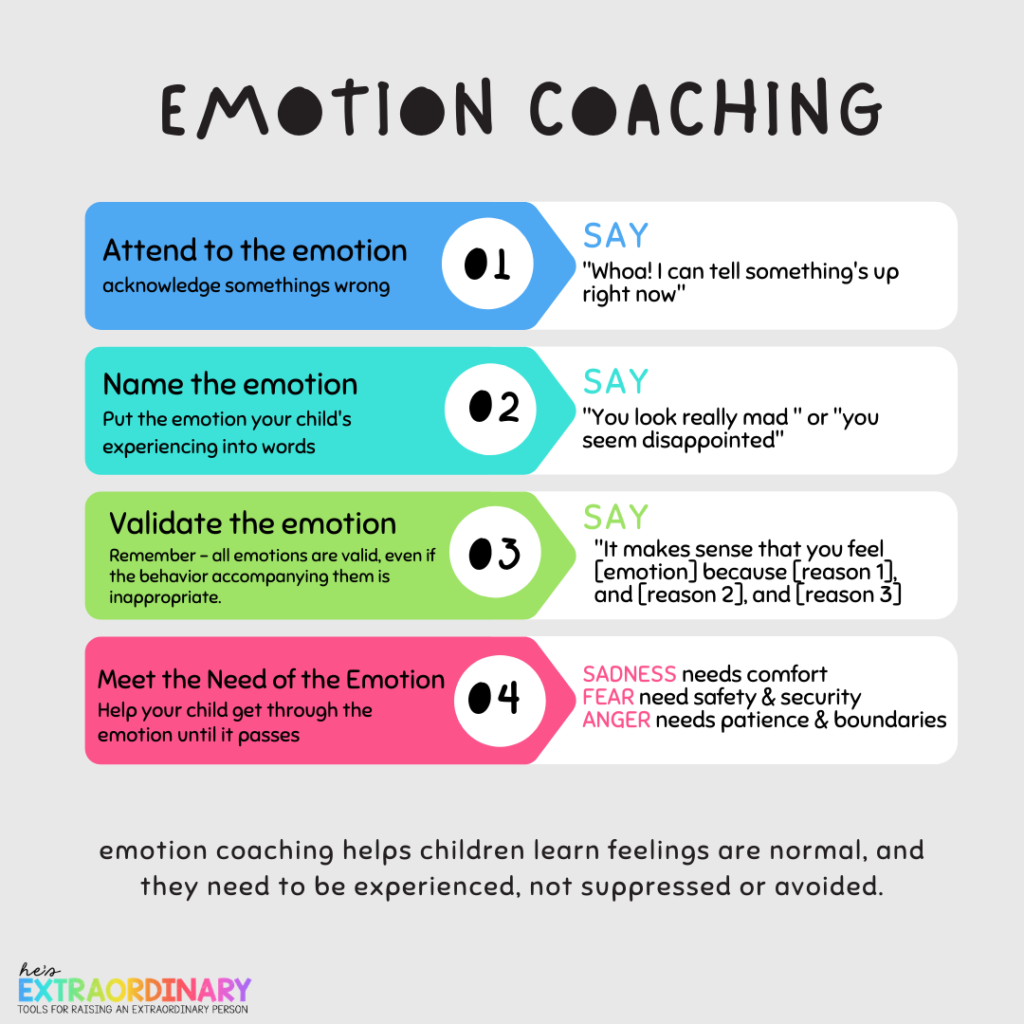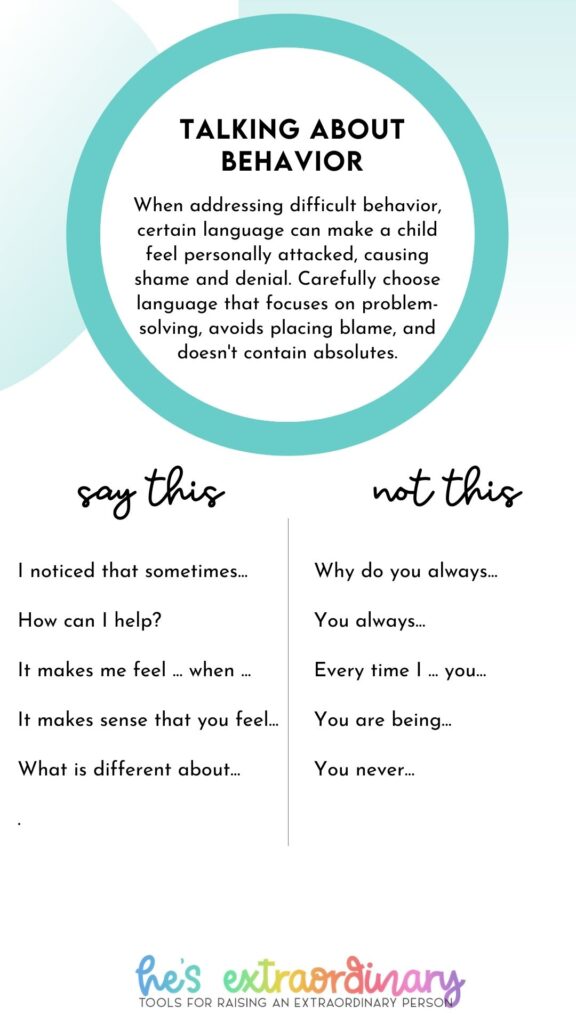Verbal De-Escalation Techniques for Challenging Behavior & Meltdowns
What’s inside this article: Eight verbal de-escalation techniques, based on The Crisis Prevention Institutes training, to help you effectively manage challenging behavior and meltdowns in children without the use of physical force or restraint.
Parents, educators, and caregivers of children with special needs or complex behavior challenges know that sometimes when kids are overwhelmed, anxious, or experience sensory overload, they lose control of their behavior.
When this happens, it’s incredibly stressful for everyone involved. You might face both verbal and physical aggression. At times, it may seem like your child is purposely acting defiant and oppositional.
However, experts in behavior now understand that this is not voluntary behavior in children. This is the work of a primal survival instinct, known as fight or flight.
If your child defaults to these aggressive and defiant reactions, it’s likely that “fight” is their primary reaction when their fight or flight instinct is activated.
To help you and your child understand fight or flight better, I’ve created a free download illustrating how the brain works. You can find it here.
Co-Escalating or Co-Regulating?
Our reactions, body language, and emotional state impact our childrens’.
There may be times when it feels like nothing you do helps them calm down, and when that’s the case, we can still definitely make it worse if we lose our composure.
The firm, authoritarian style of holding boundaries and enforcing consequences may escalate your child even more, which may also escalate you.
If that sounds familiar, as it’s certainly the case with my daughter, then approaching the situation from a different angle, helping your child regulate their emotions, so they feel calm and safe, may prove far more effective.
One highly effective way to regain control of a situation, help your child calm down, and keep yourself calm, is to use verbal de-escalation techniques.
Verbal De-Escalation Techniques
Verbal de-escalation techniques involve both verbal and non-verbal communication strategies that help de-escalate a volatile situation without using any physical force.
These verbal de-escalation techniques are based on the Crisis Prevention Institute’s training strategies and can help you successfully defuse high-stress situations with children (and adults, too).
1. Active Listening
Active listening involves more than just hearing your child speak. When practicing active listening, you need to concentrate on your child’s message. This might mean ignoring their verbal aggression (allowing them to vent) so you can get the root of the problem.
Some tips for being a good active listener:
- Be non-judgemental (pay attention to your facial expression and body language)
- Be patient while your child speaks. Do not interrupt or talk over them. Just listen.
- Provide feedback to show you’re listening: Eye contact, nodding, repeating back what they’ve said, and asking questions are all ways to show your child that you’re listening.
- Ask for clarification on anything you don’t understand.
- Summarizing after they’re finished. For example “So what you’re saying is you’re feeling ______________ because ___________________, and ______________?”
2. Emotion Coaching & Validation
Emotion coaching is the process of guiding your child through intense emotions by validating, relating, naming the emotion, and holding boundaries.
It’s a co-regulation strategy that helps kids calm down in the moment, and teaches them to better self-regulate over time.
There are four steps to effective emotion coaching:
- Attend to the emotion: Acknlowedge something is wrong
- Name the emotion: Put their emotions into words
- Validate the emotion: “It makes sense that you feel….. because…..”
- Meet the need of the emotion: Sadness needs comfort, fear needs safety, anger needs boundaries.
To read an in-depth guide on using these steps, read: How to Use Emotion Coaching to Teach Self-Regulation.

3. Maintain Calm, Stable Voice Volume
In other words, don’t yell.
Yelling will not help de-escalate a meltdown.
If your child is screaming and yelling, it’s important to wait until they stop, then you should speak to them calmly and slowly. It can take children more time to process information when they’re already triggered or having an outburst.
4. Avoid the Word “No”
No is a trigger word for a lot of people, children and adults alike. Avoiding the word “no” doesn’t mean saying “yes” to everything, or being overly permissive.
But, if your child is already in an agitated state, it’s a good idea to avoid this word. Instead, try using phrases like “We can talk about that later.” or focusing on what they can do and reminding them.
5. Silence
Stop talking altogether to both your child and anyone else around you. I also try to take slow, deep breaths when I’m trying this strategy. Breathe deeply enough that it’s audible in the silence.
This models a healthy calming strategy for your child, even if they aren’t ready to use one just yet.
Silence also provides time for self-reflection. Sometimes when everything goes quiet, your child will be able to reflect on everything that’s happening and start to feel calm again.
6. Choose Your Words Carefully
When you’re addressing challenging behavior, certain language can make your child feel personally attacked. This may cause them to become defensive or make them feel ashamed.
Choose language that validates emotions, focuses on the present problem, avoids placing blame, and doesn’t contain absolutes.
It’s also a good idea to avoid using swear words, threatening punishments and consequences if their behavior doesn’t stop, or dismissing their feelings.

7. Mind Your Body Language
80-90% of communication is non-verbal so it’s crucial to pay attention to what your body language is telling your child. You can choose all the right words, but if your body language is telling a different story, you won’t be able to de-escalate the situation.
Avoid things like crossing your arms, clenching your jaw, standing rigidly, shrugging, eye-rolling, furrowing your brow, pointing your fingers, or encroaching on your child’s personal space if they aren’t okay with you being there.
8. Rational Detachment
Rational detachment is probably the most important de-escalation strategy to remember. Without rational detachment, you won’t be able to implement the other verbal de-escalation techniques successfully.
Rational detachment is the ability to stay in control of your own behavior and not take your child’s words or behavior personally.
Remember:
- There are factors you can’t control during a meltdown, but one thing you can control is your own behavior.
- Rational detachment is required to avoid overreacting or responding inappropriately.
- Have a positive stress outlet for yourself after a meltdown. Know your warning cues that the situation is becoming too overwhelming for you and walk away if you need to.
- Use positive affirmations to help you maintain a positive mindset throughout the situation.
If you regularly encounter challenging or aggressive behavior and meltdowns, you may way to arm yourself with as many de-escalation strategies as possible.
Here are some additional resources for managing meltdowns and outbursts:
- 6 NVCI techniques for Handling Meltdowns
- 18 De-Escalation Techniques for Defusing Meltdowns
- The Ultimate Guide for Preventing Meltdowns & Outbursts
- Meltdown Magic: Step-by-step solution for handling meltdowns
Not all techniques work for all individuals, but, between all the information above, you should be able to find a hand full of strategies that work for your family.
You can also look for official Crisis Prevention Training in your area on the CPI Website here.

